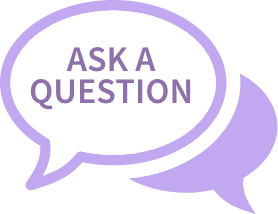How to Fix a Broken Nose: Rhinoplasty Options
We’ve all had those moments — a sudden slip, an unexpected ball to the face, or that rogue elbow in a crowded room. And then, the unmistakable crunch. The world seems to pause, and you’re left clutching your face, realizing that your nose, that central feature you’ve known so well, has just taken a detour. And just like that, you join the club of the broken-nosed! The good news is that facial plastic surgery can correct a fractured nose.
Dr. Joe Gryskiewicz, a board-certified plastic surgeon from Minnesota, is renowned for his expertise in cosmetic surgery, including rhinoplasty. Boasting over 35 years in the field, Dr. Joe is celebrated for delivering outstanding patient care and results.
Signs and Symptoms of a Broken Nose
The nose, prominently perched in the center of our faces, is unfortunately susceptible to various injuries. From minor bumps to more severe impacts, it’s not always immediately clear if that painful thud resulted in a simple bruise or an actual fracture. So, how can you tell if your nose is genuinely broken?
Here are some signs:
- Immediate Pain: One of the most immediate and obvious signs is sharp pain, especially when trying to wiggle or touch your nose.
- Swelling: Shortly after the injury, you might notice swelling around the nose and under the eyes. This can sometimes make it challenging to determine the exact shape, or any deviations in the nose immediately after the injury.
- Bruising: Dark discoloration or bruising, especially around the eyes (often referred to as ‘raccoon eyes’), can be indicative of a fracture.
- Nosebleeds: While not exclusive to fractures, a nosebleed after a significant impact can be a sign of a broken nose.
- Difficulty Breathing: If you find it hard to breathe through one or both nostrils, it could be due to internal swelling or a potential deviation caused by the fracture.
- Audible Crunch: Sometimes, if the nose is touched or moved slightly, an audible crunching sound, resulting from broken bone or cartilage, can be heard.
- Visible Deformity: Once the initial swelling subsides, a clear deviation or change in the shape of the nose can be a strong indicator of a break.
- Persistent Pain: While initial pain is common, if the discomfort continues for an extended period, it might be more than just a simple bruise.
What to Do After Breaking Your Nose
While medical attention is essential, the steps you take at home play a crucial role in ensuring a smooth recovery:
- Stay Calm: Panicking can increase blood pressure and exacerbate bleeding. Take deep breaths and try to relax.
- Keep Your Head Elevated: Sit upright and avoid lying down flat. This helps reduce swelling and bleeding.
- Cold Compress: Apply a cold pack or ice wrapped in a cloth to the nose for 15-minute intervals. This can help reduce pain and swelling. Avoid direct contact of ice with the skin.
- Avoid Nose-Blowing: Refrain from blowing your nose for the first 48 hours to prevent further injury or bleeding.
Diagnosing a Broken Nose
So, how do medical professionals determine if your nose is truly broken?
- Patient’s Account: The process often begins with you recounting the incident. How did the injury occur? Was there an audible crack? How immediate was the pain? Your narrative provides crucial context and initial clues.
- Physical Examination: A hands-on assessment is vital. The doctor will gently palpate the nose to feel for any irregularities or movement in the bone and cartilage. They’ll also check for tenderness, swelling, and any visible deformities.
- Observation of Symptoms: Common signs like bruising around the eyes, swelling, nosebleeds, or difficulty breathing can hint at a fracture. A visibly crooked or misshapen nose post-injury is also a telling sign.
Treatment of a Broken Nose
Manual Realignment
When you suffer a broken nose, one of the primary concerns is ensuring that it heals correctly. Not just for appearance’s sake, but also to maintain proper function.
Manual realignment, often referred to as a “closed reduction,” is a common procedure to set the nose back to its original position.
- Manual realignment is a hands-on procedure where a doctor physically adjusts and sets the broken bones and cartilage of your nose back to their proper place.
- Typically, if you have a displaced fracture, meaning the bones have moved out of their usual position, you’ll need this treatment. It’s best done within the first 14 days after the injury, ideally between days 3 to 7, when the swelling has reduced but the bones haven’t started to set.
The Procedure Step-by-Step
- Preparation: Before the procedure, you’ll be seated comfortably, and the area around your nose will be cleaned.
- Anesthesia: To ensure you don’t feel pain during the realignment, a local anesthetic will be applied. This might be a topical gel or a more direct injection into the nose.
- Realignment: Using specialized instruments or their fingers, the doctor will carefully move the bones and cartilage back to their original position. You might feel pressure, but it shouldn’t be painful.
- Stabilization: After the realignment, a nasal splint or cast will be applied to your nose. This helps keep the bones in place while they heal.
Benefits of Manual Realignment
- Restored Function: Properly aligned bones ensure you can breathe easily and don’t face long-term breathing issues.
- Aesthetic Appearance: Realignment ensures that your nose retains its original shape, preventing any visible deformities.
- Prevention of Complications: If left untreated, a displaced fracture can lead to chronic problems or require more invasive surgeries later on.
Surgical Methods to Correct a Fractured Nose
Rhinoplasty
Rhinoplasty, often referred to as a “nose job,” is a surgical procedure that reshapes or resizes the nose. It’s one of the most common facial plastic surgeries, and its reasons can be both cosmetic and functional.
Purpose of Rhinoplasty
- Cosmetic Changes: Adjusting the size of the nose, reshaping the bridge or tip, or altering the angle between the nose and upper lip
- Functional Improvements: Correcting breathing problems caused by structural defects in the nose
Procedure Overview
- Consultation: Before the surgery, you’ll discuss your goals and desired outcomes with your plastic surgeon. He’ll evaluate the structure of your nose and face and plan the procedure accordingly.
- Anesthesia: Rhinoplasty can be performed under local or general anesthesia, depending on the complexity.
- Incisions: Your plastic surgeon will make incisions either inside the nose (closed rhinoplasty) or outside (open rhinoplasty) to access the bones and cartilage.
- Reshaping: Excess bone or cartilage may be removed, or tissue may be added, either from another part of your body or using a synthetic filler.
- Stitching and Bandaging: Once the reshaping is done, the plastic surgeon will close the incisions and place a splint on your nose to support the new shape as it heals.
Recovery
- Initial Recovery: Swelling and bruising are common. Keeping your head elevated can help reduce these symptoms.
- Splint Removal: The splint is usually removed after a week.
- Activity Limitations: It’s recommended to avoid strenuous activities for a few weeks after the surgery.
Septoplasty
Septoplasty is a surgical procedure specifically designed to correct a deviated septum. The septum is the wall of bone and cartilage that divides your nose into two separate nostrils. A deviation can cause breathing problems and recurrent sinus infections.
Purpose of Septoplasty
- Breathing Issues: The primary reason for septoplasty is to improve breathing by straightening the septum.
- Chronic Sinusitis: Recurrent sinus infections due to blockages can be alleviated with this procedure.
Procedure Overview
- Consultation: A thorough examination, sometimes involving imaging tests, will be done to determine the extent of the deviation.
- Anesthesia: Septoplasty is typically performed under local or general anesthesia.
- Incisions: The plastic surgeon will make an incision inside the nose to access the septum.
- Correction: The deviated portions of the septum are either removed or realigned to a straight position.
- Closure: The incisions are stitched back together. Sometimes, silicone splints are inserted to support the septum as it heals.
Recovery
- Initial Recovery: You might experience some pain, swelling, and nasal congestion. Breathing through your nose might be challenging for a few days.
- Nasal Packing: If the surgeon places cotton packs in your nose, they’re typically removed within a day or two.
- Activity Limitations: Refrain from strenuous activities and nose-blowing for several weeks.
What Potential Issues Can Arise From A Fractured Nose?
Beyond the immediate pain and swelling, there are several complications that can develop if not addressed promptly and properly. Here’s a breakdown of potential issues you might face after sustaining a nasal fracture:
- Breathing Difficulties: A displaced fracture can obstruct the nasal passages, making it hard for you to breathe through your nose. Swelling from the injury can further narrow the airways, exacerbating the problem.
- Infection: Open fractures, where the skin is broken, can introduce bacteria into the wound, leading to infections. If not treated, these infections can spread and become more severe
- Nosebleeds: Blood vessels in the nose can be damaged during the injury, leading to frequent nosebleeds. While some nosebleeds are minor, others can be heavy and prolonged, requiring medical attention.
- Change in Nose Shape: If the broken bones and cartilage don’t heal correctly, your nose might look crooked or have bumps. This can be a cosmetic concern for many, impacting their overall appearance.
- Septal Hematoma: This refers to a collection of blood within the nasal septum, the wall dividing the two nostrils. If not drained, it can lead to complications like cartilage damage or infection
- Loss of Smell: In some cases, the injury can impact your olfactory nerves, leading to a reduced sense of smell or even complete loss.
- Chronic Sinusitis: A fractured nose can lead to blockages in the sinus passages. This can result in recurrent sinus infections, characterized by congestion, headaches, and facial pain.
- Nasal Valve Collapse: The injury can weaken the nasal structures, leading to a collapse of the nasal valve. This can further contribute to breathing difficulties and may require surgical intervention.
- Prolonged Pain and Discomfort: While some pain is expected after the injury, if it continues for an extended period, it might indicate a more severe issue or improper healing
Nose Surgery for a Broken Nose FAQs
How can I tell if my nose is broken?
A broken nose often presents with immediate pain, swelling, and sometimes bruising around the nose and eyes. You might notice difficulty breathing through your nostrils or an audible crunching sound when touching the nose. However, the only way to be certain is to seek a medical evaluation.
What should I do immediately after injuring my nose?
Stay calm and try to keep your head elevated to reduce swelling. Apply a cold compress or ice wrapped in a cloth to the injured area in 15-minute intervals. Avoid blowing your nose or making sudden facial expressions, and seek medical attention as soon as possible.
Can a broken nose heal on its own?
While minor fractures might heal without intervention, it’s essential to get a medical assessment. Without proper treatment, a broken nose can lead to complications like breathing difficulties, infections, or a permanently altered shape.
When should I consider surgery for a broken nose?
Surgery, such as rhinoplasty or septoplasty, might be recommended if there’s a significant displacement, breathing issues, or cosmetic concerns. It’s also considered if initial non-surgical treatments don’t provide satisfactory results.
How long does it take for a broken nose to fully heal?
The initial pain and swelling usually improve within a week, but complete healing can take several weeks. If surgery is performed, the recovery timeline might be extended. It’s essential to follow all medical advice and avoid activities that risk another injury during the healing period.
Further Reading About Face Procedures with Dr. Joe
- Read Dr. Joe’s Rhinoplasty Surgery Page
- Read Dr. Joe’s Blog about How to Reduce Bruising After Rhinoplasty or Septoplasty
- Read Dr. Joe’s Blepharoplasty (Eyelid Surgery)
- Read Dr. Joe’s blog about Celebrity Rhinoplasty Nose Jobs
Medical References About Broken Nose
- Broken Nose (Fractured Nose) – Cleveland Clinic
- Broken Nose – Mayo Clinic
- Broken Nose – WebMD
- Recognizing A Broken Nose: Self-Care, Treatment – Medical News Today
- Nose Reshaping (Rhinoplasty) – NHS



